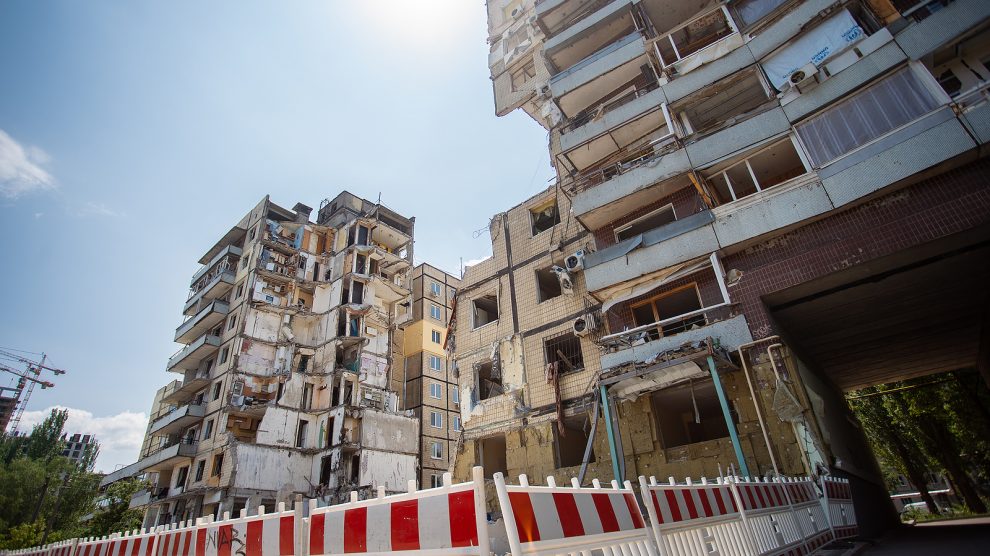Under a scenario where the Ukrainian government accelerates economic reforms, addresses sectoral needs, and deepens EU integration, Ukraine could see nearly 130 billion US dollars in private sector investments flow into the country.
Key reforms can help Ukraine generate up to 130 billion US dollars in private financing to help address reconstruction needs, according to a new report, Private Sector Opportunities for a Green and Resilient Reconstruction in Ukraine, prepared by the International Finance Corporation (IFC) and International Bank for Reconstruction and Development (IBRD).
- Ukraine’s economy is starting to recover
- The myths and realities of Ukraine’s quest to boost uranium production
- For emerging Europe, Granada summits offer little
Russia’s invasion has radically altered Ukraine’s economy, which will emerge from the military invasion transformed. The dissolution of the country’s longstanding financial and trade ties with Russia, coupled with its ambitious drive toward European Union membership, is fundamentally altering Ukraine’s role in the regional and global economy.
The report claims that while a rapid and sustainable recovery will require strategically mobilising scarce public resources to crowd in private investment, this process must focus not only on the reconstruction of existing value chains, but also on the development of new industries and infrastructure that reflect Ukraine’s deepening integration with European and transatlantic markets.
The potential for private finance
In March 2023, the Second Rapid Damage and Needs Assessment (RDNA2), carried out by the World Bank in coordination with the EU and the Ukrainian government, identified 411 billion US dollars worth of investments required for Ukraine’s reconstruction.
This new report, also developed in cooperation with Ukraine’s government, assesses the potential for private financing to meet these needs under both a status quo scenario and a scenario with increased reforms, sectoral interventions and EU integration.
In the latter scenario, the potential to raise private finance almost doubles.
Under the non-reform scenario, which envisions a continuation of pre-invasion economic dynamics, private investments are estimated to generate over 73 billion US dollars, or 18 per cent of the reconstruction needs identified in RDNA2.
Under a scenario where the Ukrainian government accelerates economic reforms, addresses sectoral needs, and deepens EU integration, Ukraine could see nearly 130 billion US dollars in private sector investments flow into the country.
This would cover about one third of needs identified in the RDNA2 and open an additional 282 billion US dollars in further private sector opportunities to boost Ukraine’s development.
A critical juncture
“This report offers recommendations on the transformative reforms to unlock private sector investments in Ukraine’s green and resilient reconstruction,” says Alfonso Garcia Mora, IFC’s vice president for Europe, Latin America and Caribbean.
“It comes at a crucial juncture as the government develops its Ukraine Plan, a strategy for reforms and investment, as part of its engagement with the European Union.”
The report identifies several reforms with the greatest potential to drive a sustainable and resilient recovery.
These include agriculture, where completing land and irrigation reforms and strengthening institutions, increasing access to affordable financing and enabling the adoption of climate-smart agriculture technologies could attract private investment worth 30 billion US dollars.
These investments could cover the sector’s reconstruction needs. Reforms in the food and beverage sector could generate an additional 16 billion US dollars of private investment.
In the area of transport and logistics, public investment and policy reforms could allow the private sector to cover nearly seven billion US dollars of reconstruction needs, while unlocking 41 billion US dollars in additional private sector opportunities.
For the energy and extractives sectors meanwhile, policy reforms could enable the private sector to invest 36 billion US dollars to meet RDNA2 needs and generate a further 132 billion US dollars in investment opportunities.
When it comes to housing, by implementing policy reforms, providing financial support, and fostering collaboration with regional developers and financial institutions, investment by households can exceed 30 billion US dollars and generate an additional 60 billion US dollars beyond reconstruction needs.
The report emphasizes that these reforms, combined with sound macroeconomic management, conducive trade and investment policies, and risk mitigation instruments, are essential to stimulate private capital inflow.
A combination of sources
The report concludes that demand for private financing can be met by a combination of traditional sources.
These include within-company financing equal to about 10 per cent of GDP and cross-border financing equal to about five per cent of GDP. The latter encompasses both FDI and portfolio investment.
Household savings meanwhile will boost private financing but will focus primarily on the housing sector. Domestic financial markets, including the banking and pension systems, will be crucial to channeling domestic savings into corporate finance.
The level of public trust in financial service providers will largely determine how effectively savings are mobilised.
Unlike many news and information platforms, Emerging Europe is free to read, and always will be. There is no paywall here. We are independent, not affiliated with nor representing any political party or business organisation. We want the very best for emerging Europe, nothing more, nothing less. Your support will help us continue to spread the word about this amazing region.
You can contribute here. Thank you.



Add Comment